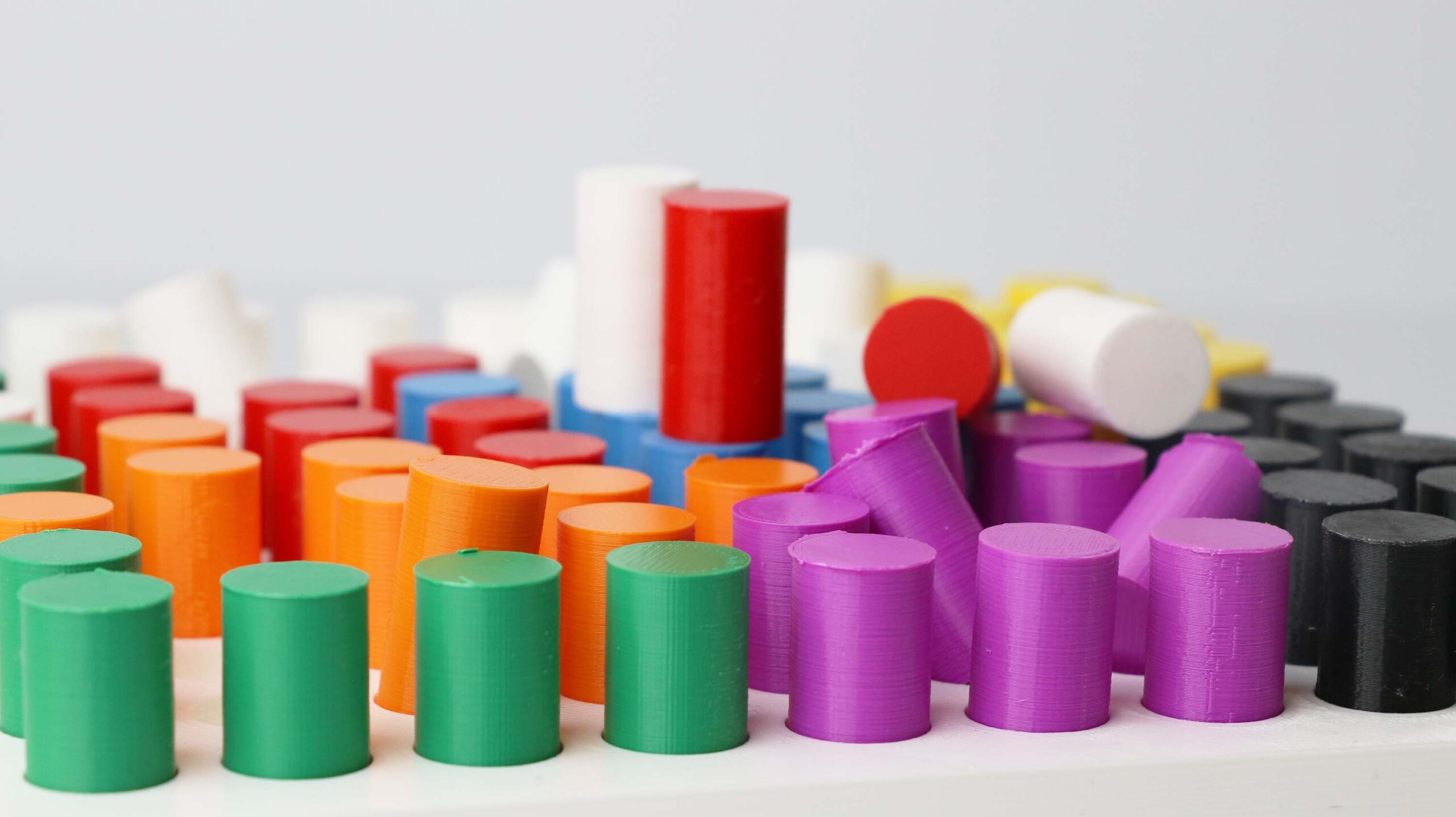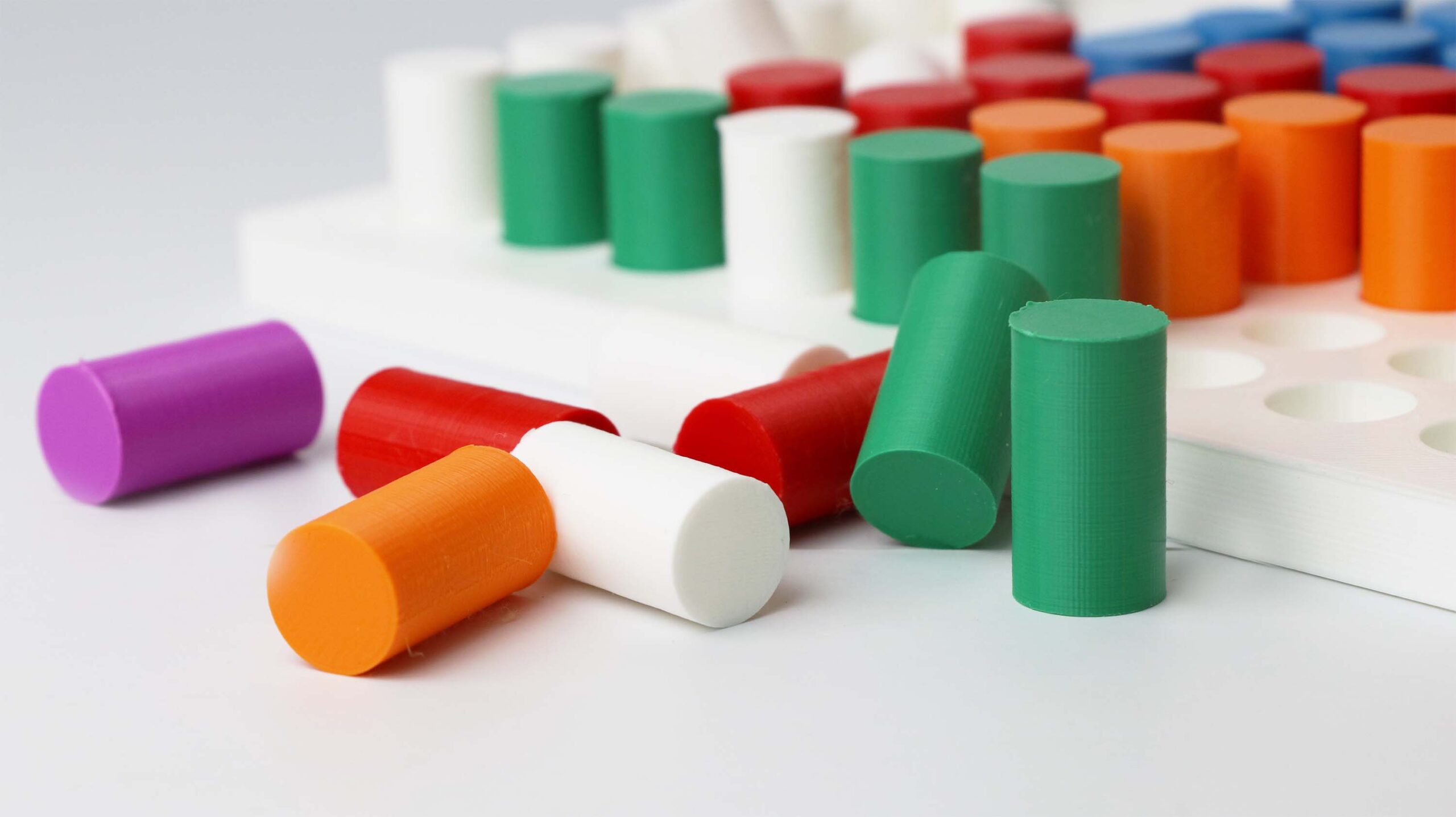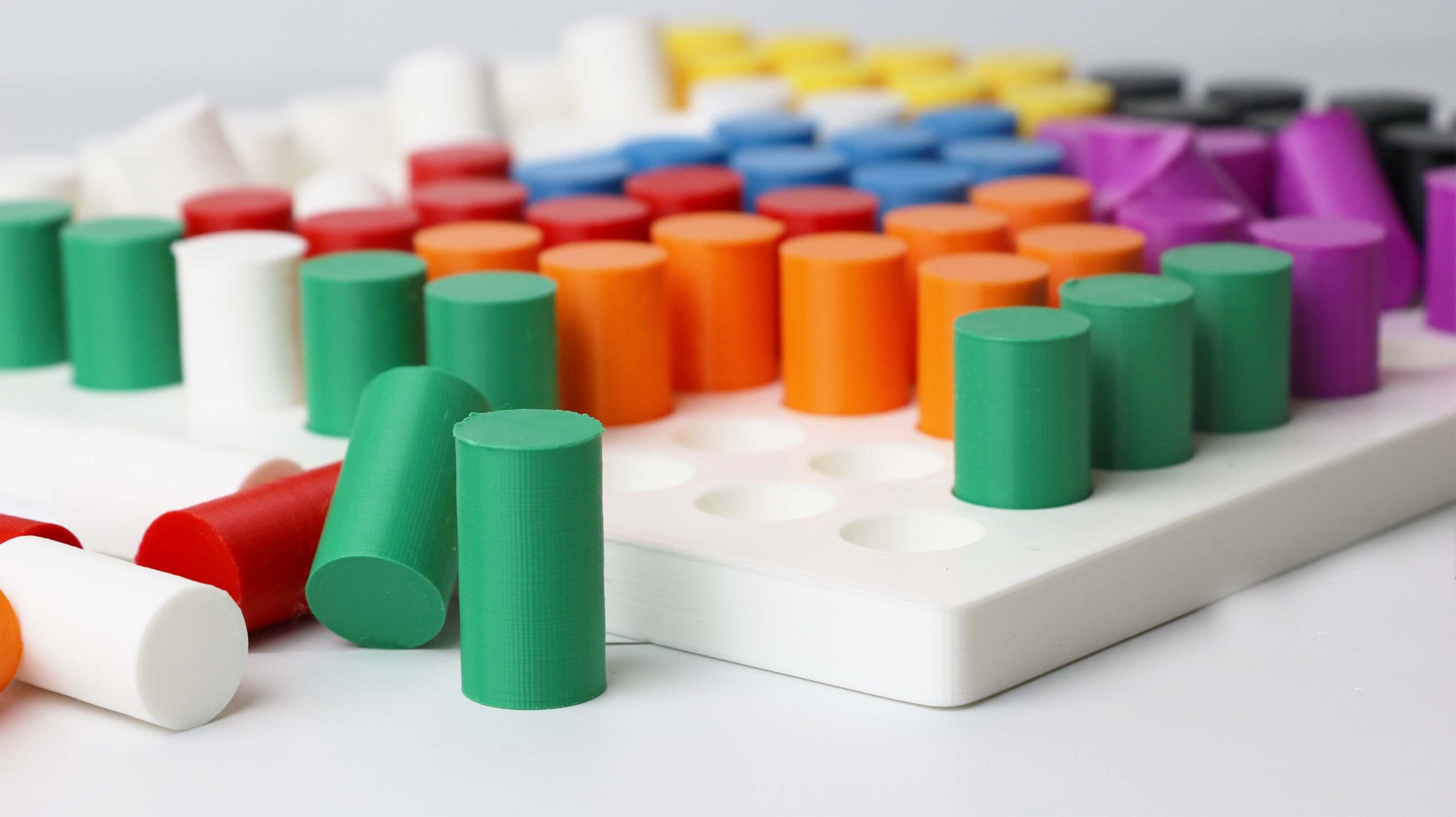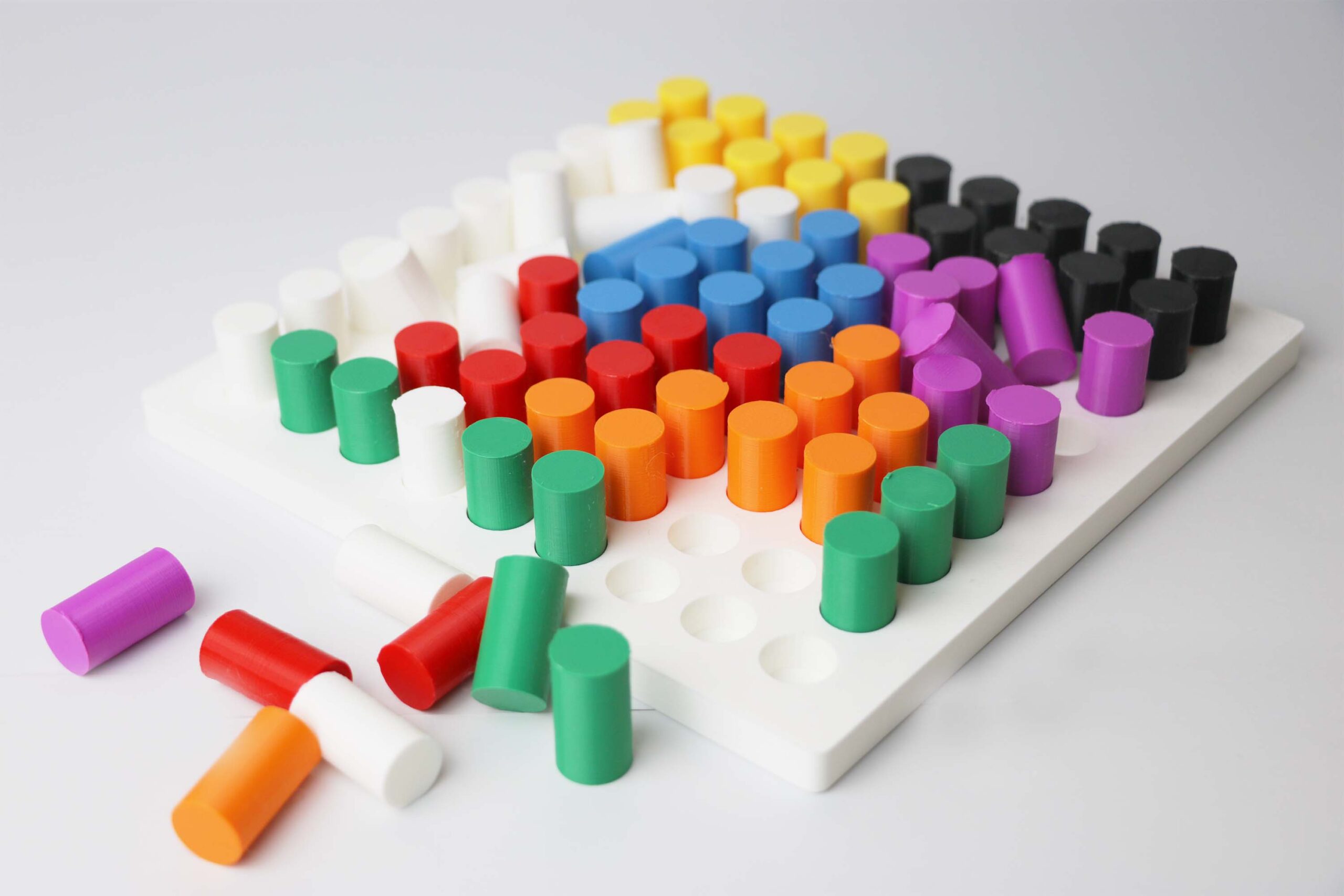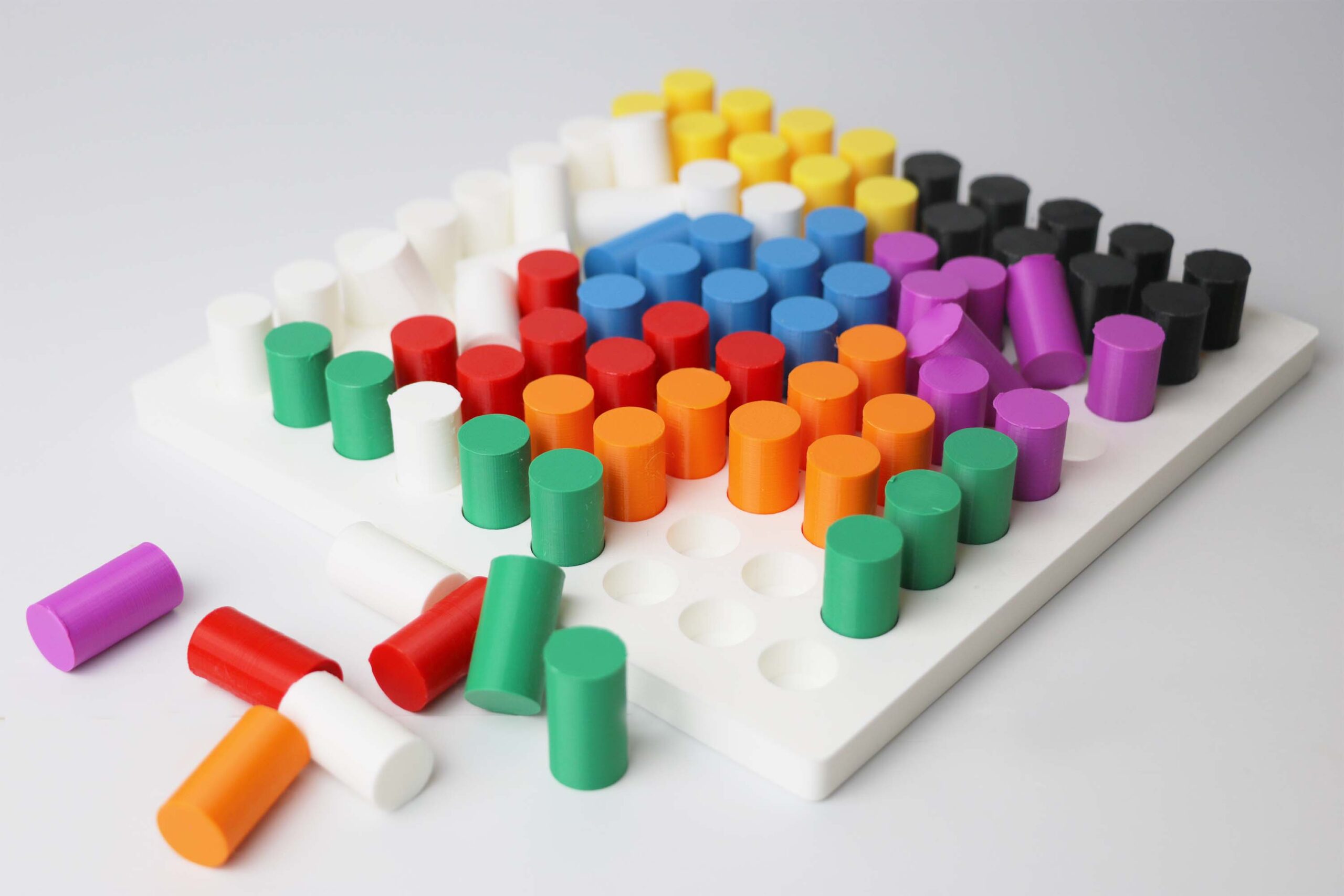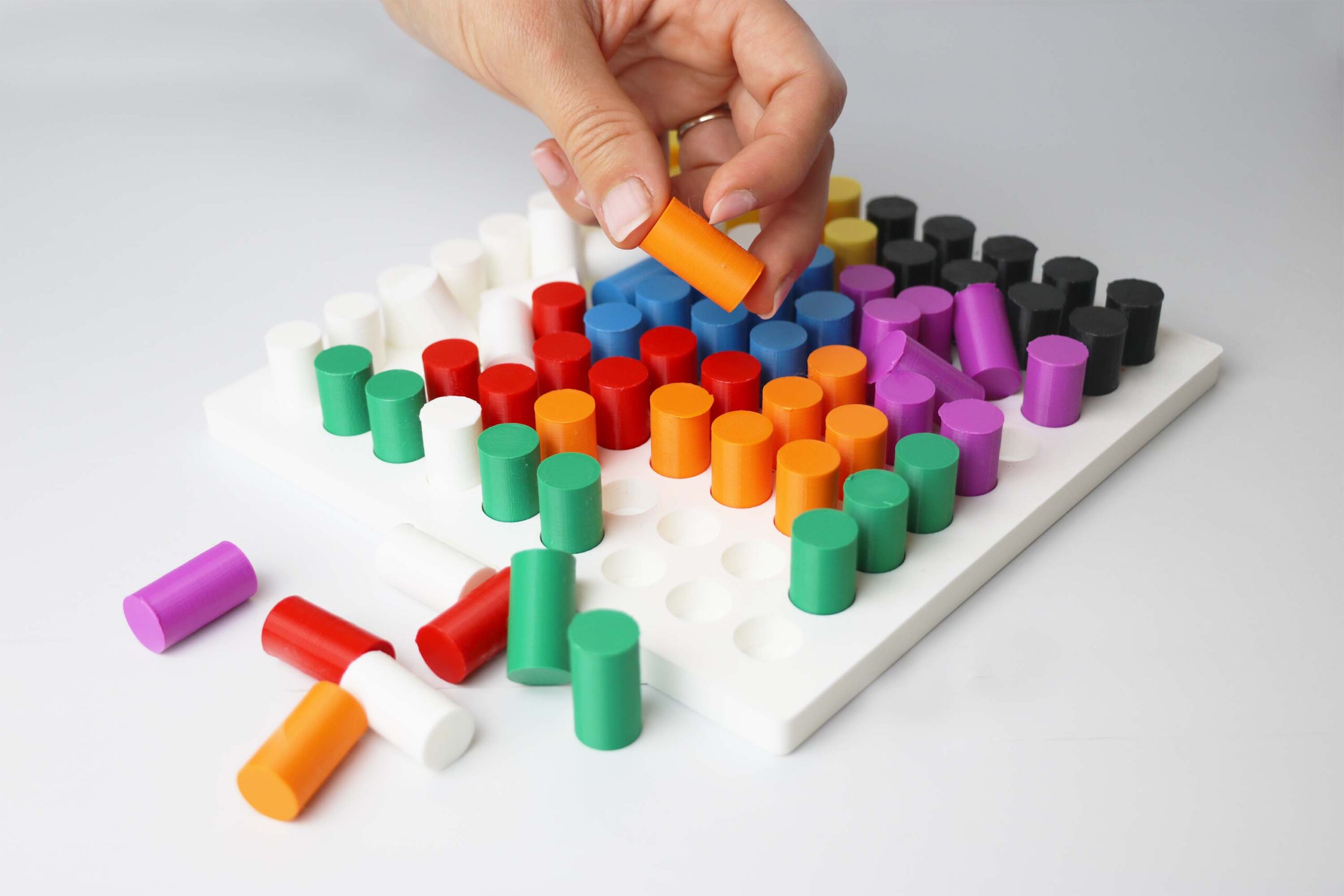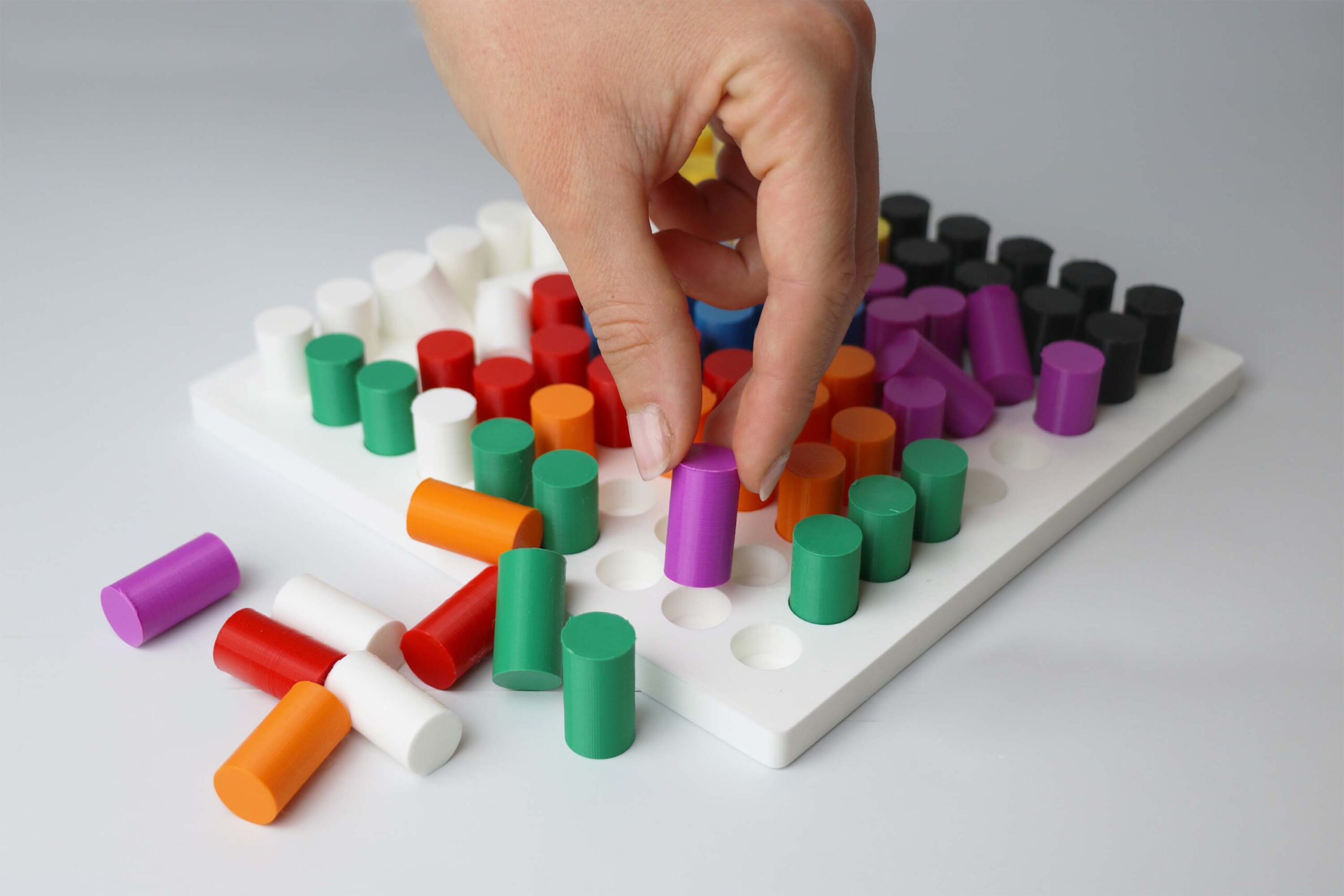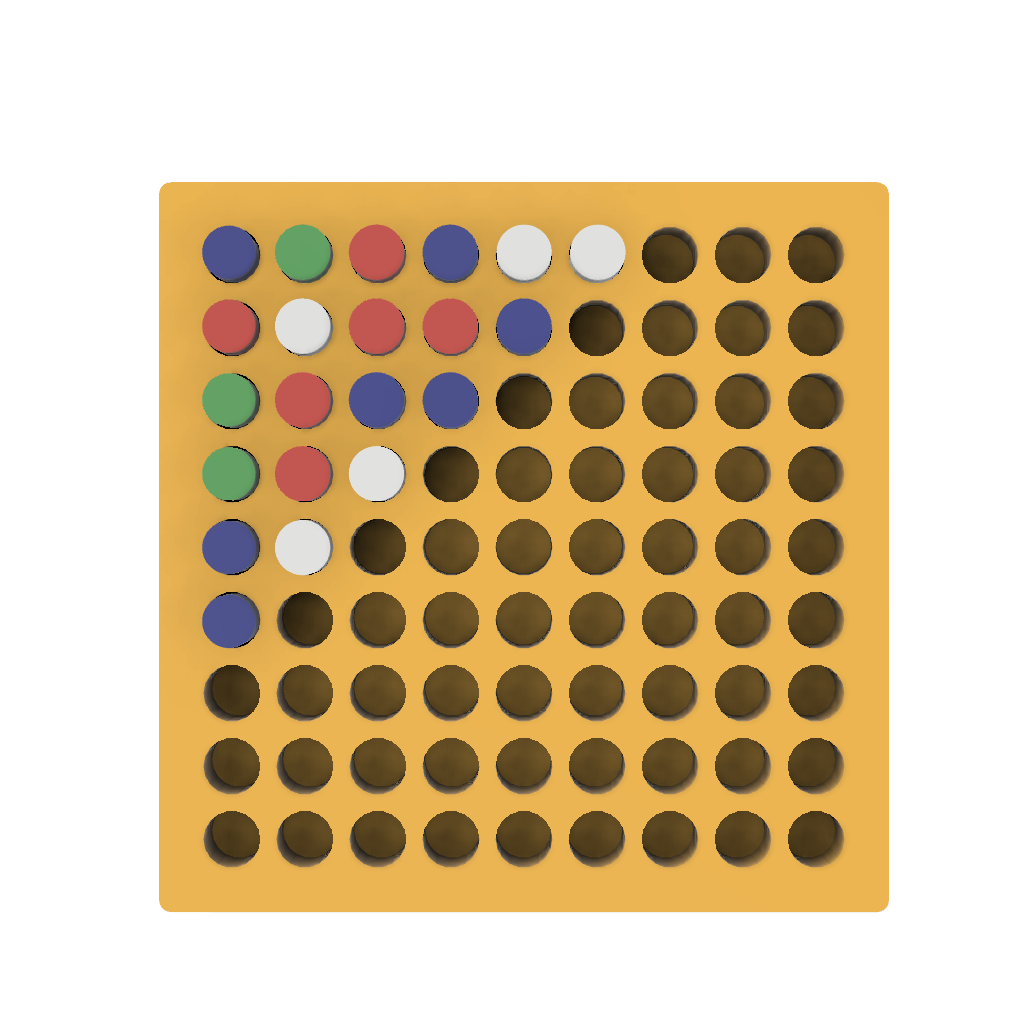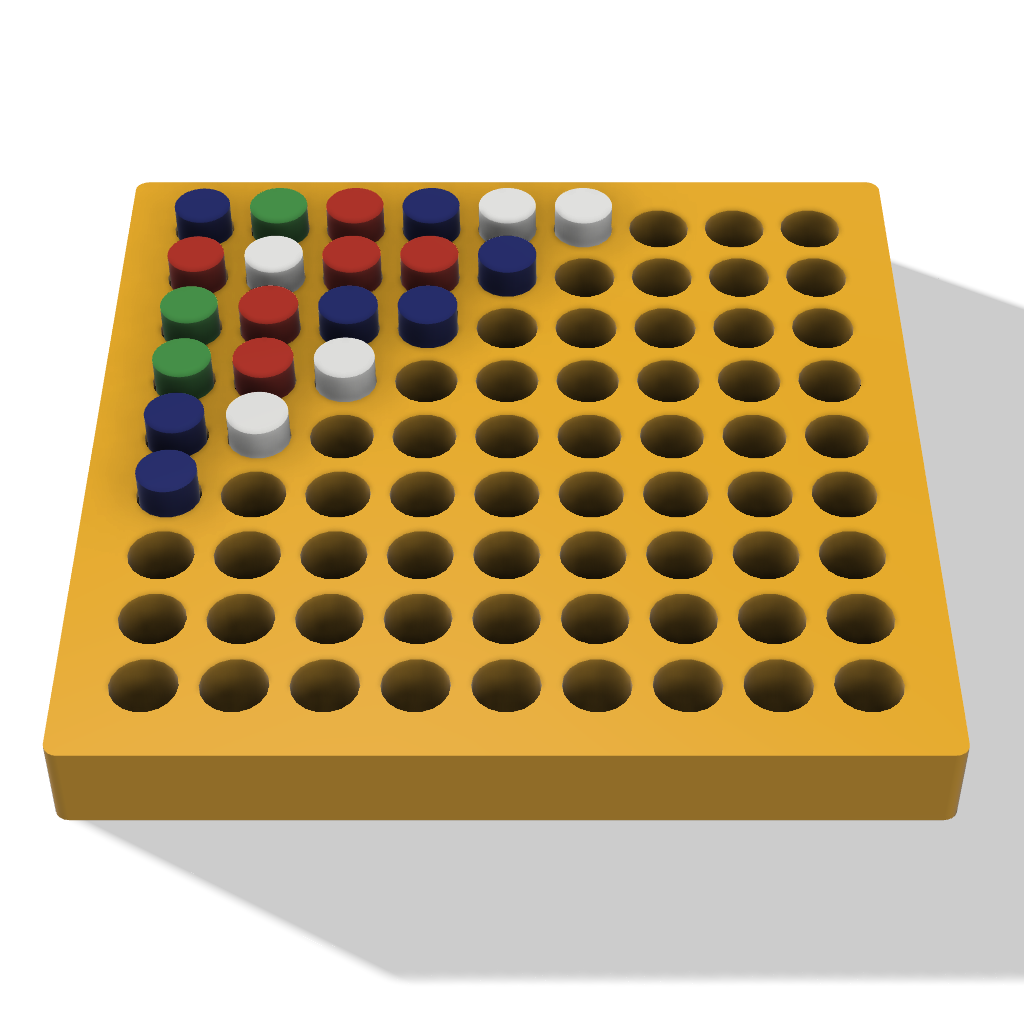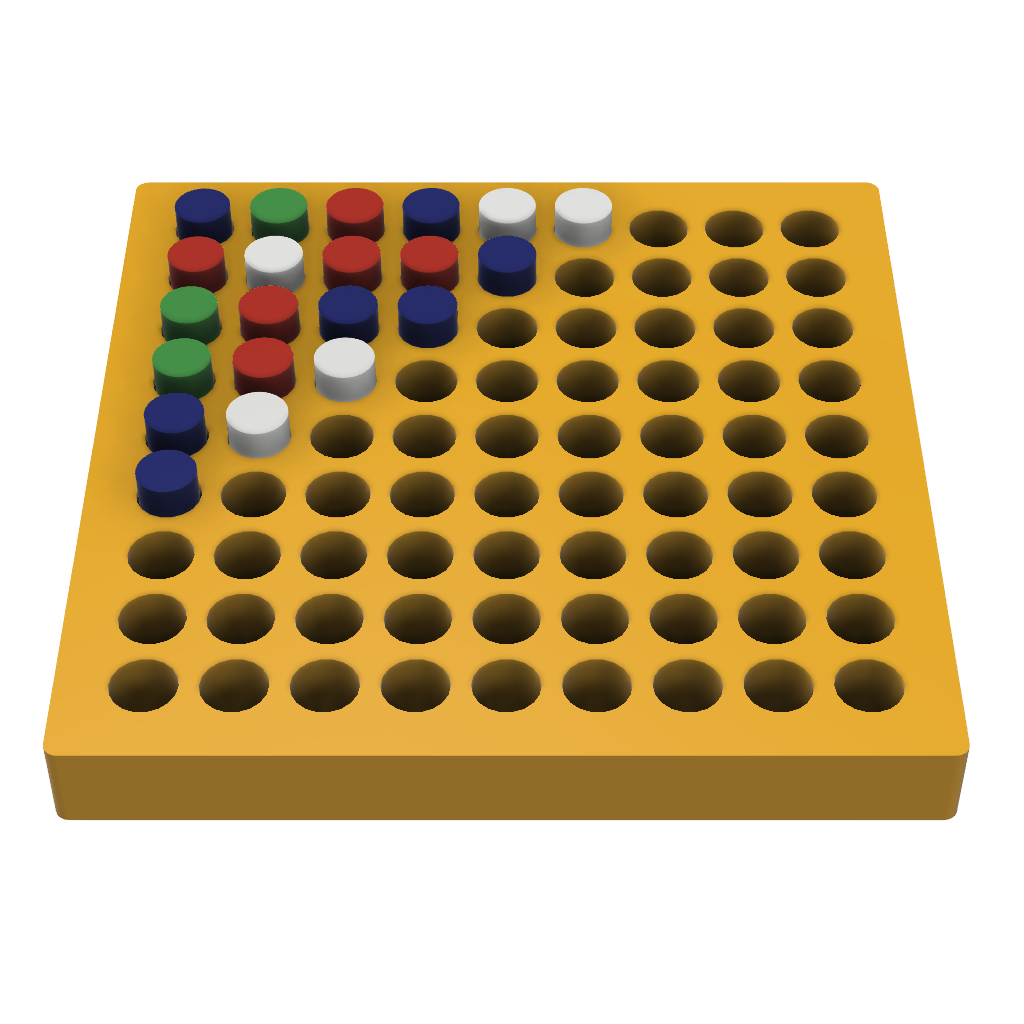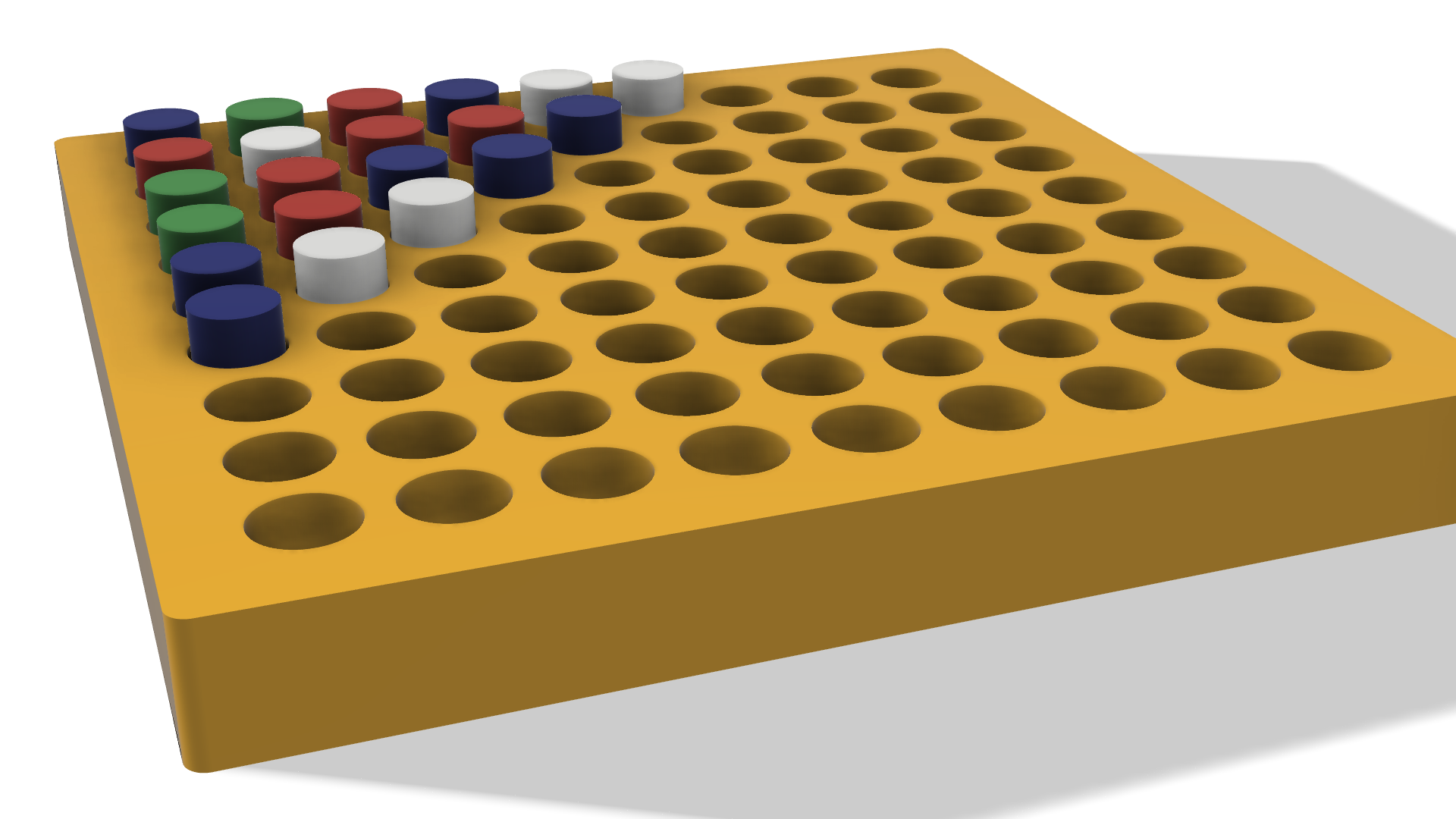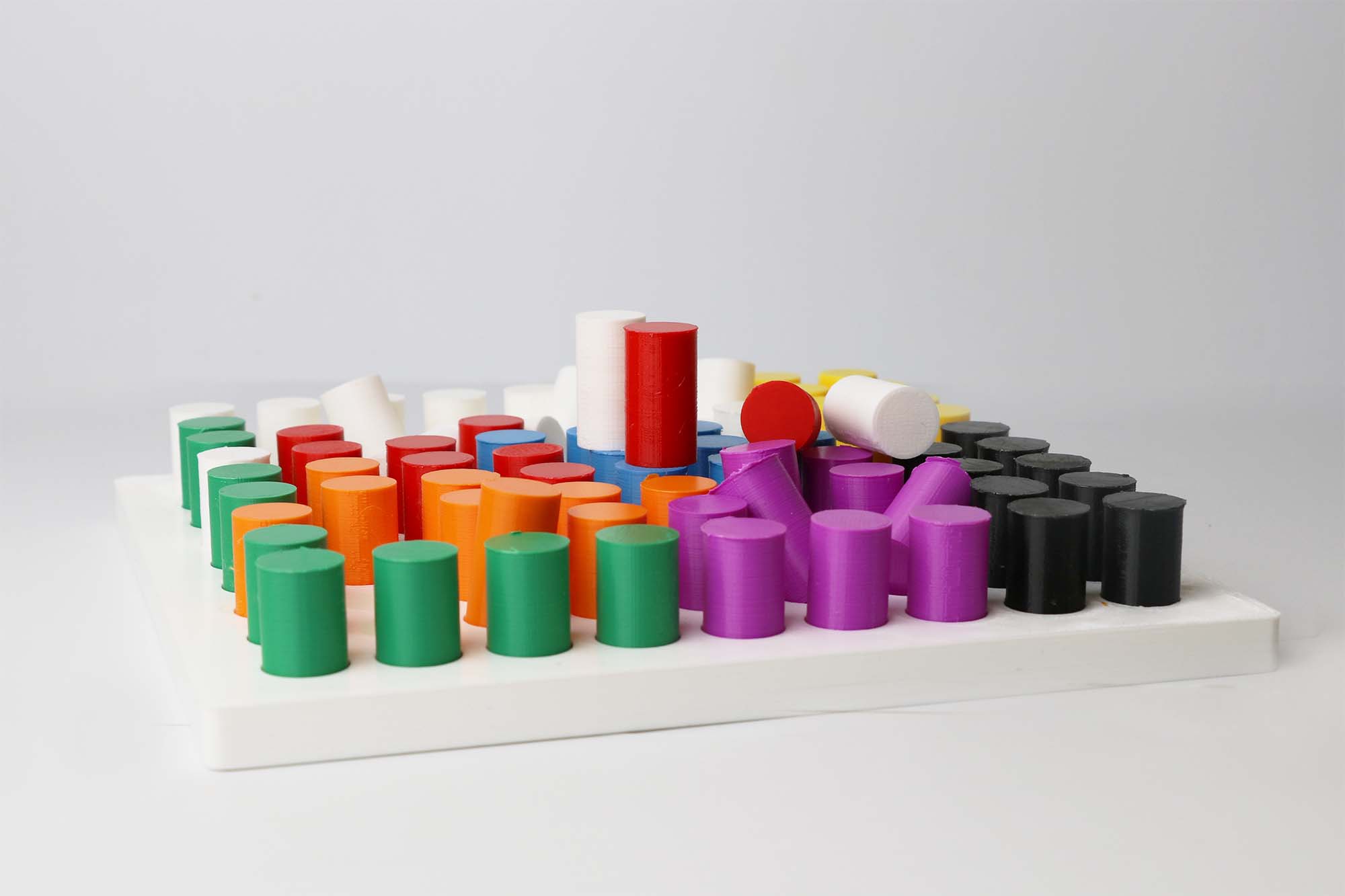
About
Exercise name:
Peg Mosaic
Which cognitive area is it related to?
Abstract thinking, Cognitive abilities, Concentrations, Creative thinking, Dexterity, fine motor skills, Hand-eye coordination, Imagination, Visual perception
Description of the exercise:
Arranging the mosaic based on predefined schemes stimulates cognitive processes. The exercise can be set up with varying degrees of difficulty according to the stage of dementia – suitable for people with mild to advanced stages.
Who is the game for – The game is suitable for the prevention of cognitive decline, follow-up with neurological diseases. It is suitable for people with mild dementia. It can be used both by daycare center professionals and by families caring for a loved one with dementia.
Materials needed – tiles with mathematical symbols, which are stored in a suitable bag or small box.
Participants – a person with dementia or dementia syndrome (person over 65 years) (2-4 years), caregiver or moderator for people with dementia syndrome.
This game is led by the caregiver or moderator, and can have 2 to 4 participants with dementia or dementia.
Location – Choose a quiet place where the person with dementia and the surrounding feelings are comfortable, e.g. around a dining table or coffee table where photos can be spread. There must be enough light. Make sure the person with dementia has taken glasses or other aids such as a hearing aid so that you can communicate.
Presentation – explain the activities you are going to do together in a funny and calm way.
Depending on the stage of dementia, the schemes of the board game “Mosaic set” can be made in different levels of difficulty.
There can be a scheme in which the colors correspond to a certain number. Have a look at the chosen scheme together and introduce which number to which color corresponds – explain to the person that they will have to arrange the color cones so that they correspond to the marked numbers.
If the person is at late stage of dementia, he can follow a pre-colored scheme. Then, explain that the goal is to arrange the color cones in the way showed in the scheme.
Make sure that the person with dementia understands the idea.
Help them if needed.
In the end, greet each other for the well-done job. Pack away the materials back into the box and consider together about playing the game again after a while.
How can this model be used at home and in residential care/nursing homes?
Dementia affects a person’s cognitive functions, self-identity, memory and concentration. It develops gradually and leads to a change of personality. People with dementia have a problem with memory, which leads to recall difficulties and problems with speech, coordination, abstract thinking, concentration, planning, orientation with regard to place and time, frequent mood swings. This type of exercise will stimulate:
- Concentration
- Planning
- Memory
- Coordination
What benefits can be obtained with its use?
Improving capabilities for
- Planning
- Concentration
- Memory
- Coordination
Technical specification of the model
Technology:
Material:
Colour (One piece one colour):
White, yellow, green, black, red, orange, gray, blue.
Suitable dimensions for its use in the classroom (MM):
- One square board with 25 holes arranged in a 5×5 format: 200 x 200 mm, the ⌀ of the wholes is 7 mm
- One square board with 100 holes arranged in 10×10 format: 300 x 300 mm, the ⌀ of the holes is 7 mm
Should the piece be resistant or be subjected to stress?
Yes
Should it be printed during meeting with person with dementia, before or after?
Before
Do you have to paint the model?
No
Number of pieces of which the model is composed:
Ensemble type if necessary (slot, clip, screwed ...)
No
Accuracy and definition required. (Quality) Low, mid or High.
Mid
Images

STL files viewer
Good luck!

